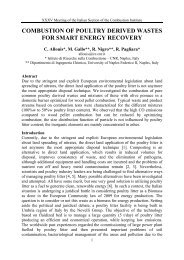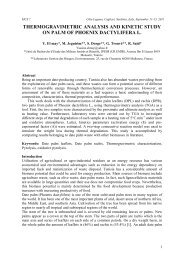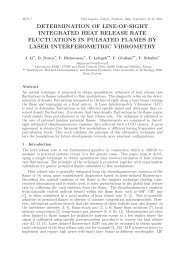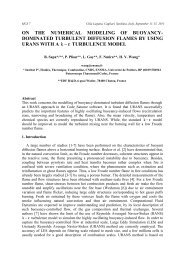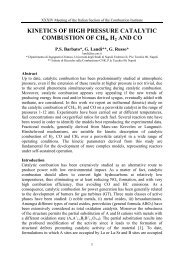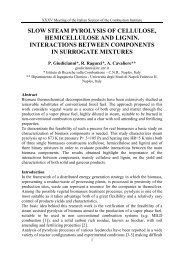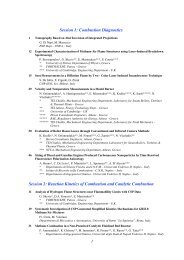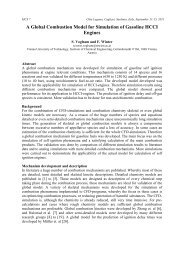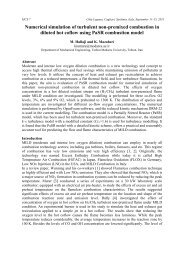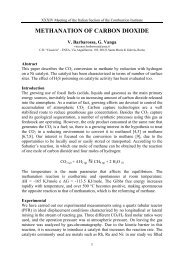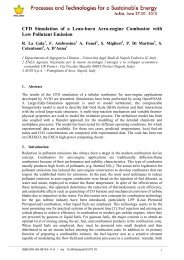RANS Study of Hydrogen-Air Turbulent Non-Premixed Flames
RANS Study of Hydrogen-Air Turbulent Non-Premixed Flames
RANS Study of Hydrogen-Air Turbulent Non-Premixed Flames
Create successful ePaper yourself
Turn your PDF publications into a flip-book with our unique Google optimized e-Paper software.
Ischia, June, 27-30 - 2010<br />
shown in Fig. 6. The outer vortex-flame interaction is shown in the left insert, and the fuel<br />
side vortex-flame interaction is shown on the right. Vortices are more evident in the isoradial-velocities<br />
contours <strong>of</strong> Fig. 7: red and blue colors represent positive (outward) and<br />
negative (inward) radial velocities, respectively.<br />
Fig. 7<br />
Instantaneous radial velocity fields in the first part <strong>of</strong> the combustor for<br />
: on the left is depicted the case with<br />
Vortices motion are time dependent. Frequency spectra from the temperature fluctuations<br />
(measured on a single point in the domain, x=10cm; y=0.95cm) are obtained using FFT<br />
method. Figure 8 shows frequency spectra obtained from temperature data collected at a<br />
radial location <strong>of</strong> 9.5 mm within the shear-layer at a distance <strong>of</strong> 100 mm from the nozzle exit.<br />
The data, stored from 60000 time-steps, covered a real time <strong>of</strong> 0.6 s. We can distinguish two<br />
peaks over a frequency range between 0 to 1000 Hz. The one at 273.9 Hz corresponds to the<br />
fundamental frequency, and the subharmonic <strong>of</strong> this (547.8 Hz) appears as the second peak.<br />
The frequency <strong>of</strong> the highest peak can be compared with a dimensional analysis that defines a<br />
frequency as the ratio <strong>of</strong> mean velocity and characteristic length <strong>of</strong> the vortices:<br />
(1)<br />
where L v is the distance between two consecutive vortices. Vortex frequency value is very<br />
close to the peak obtained from the FFT and displayed on Fig. 10. Physically this<br />
phenomenon can be explained considering turbulent fluctuations as different spatial and<br />
temporal scales vortical structure overlap. When these move inwards the fluid they induce a<br />
perturbation on the characteristic scalars.<br />
5



